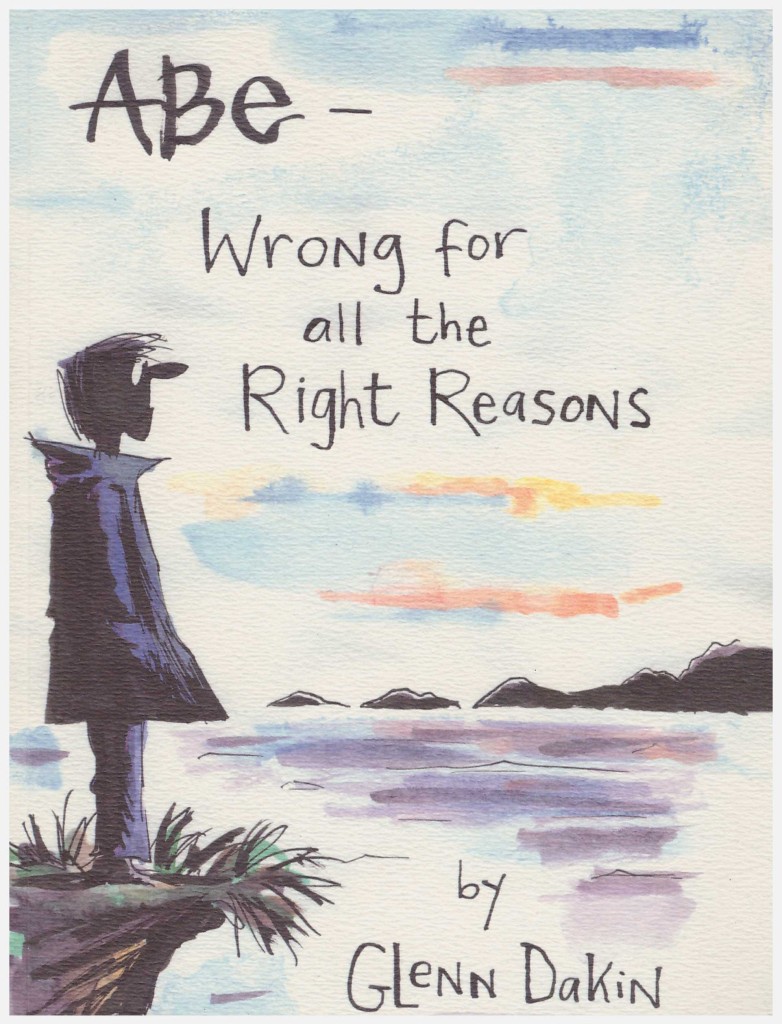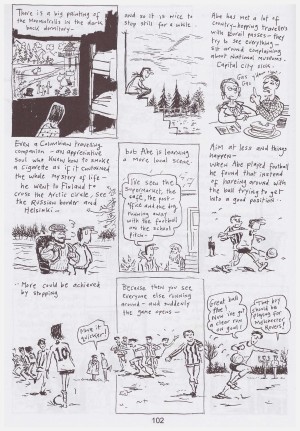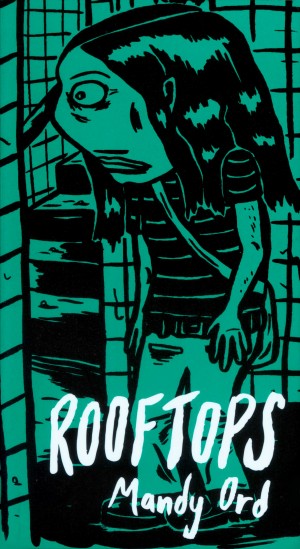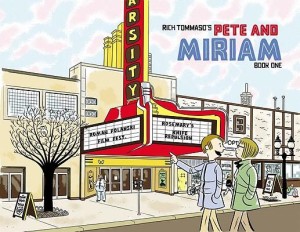Review by Frank Plowright
There’s a case to be made for Glenn Dakin being a comics equivalent of Kool Herc. Both played a major part in formulating a new and spirited sub-genre of an established form, in Kool Herc’s case the basis of hip-hop, yet neither has received their due.
Dakin’s achievements are laid out in Wrong for the Right Reasons, a two decade trawl through his musings. He was part of Britain’s early 1980s small press boom, yet immediately distinguished his work with a wry sense of humour absent from the material produced by most of his contemporaries. He’s a thoughtful, introspective and philosophical creator, and his lead characters, although enveloped in fictional circumstance, represent him, or at least elements of him.
There’s an abstraction and alienation to Abraham Rat, the Abe of the title, initially denizen of a far from sparkling future used to mirror the society of the 1980s. He’s also superhero Captain Oblivion, whose generic nature comments on superheroes, yet also feeds into a larger wistful sense that infuses Dakin’s work. This is a wish for an idealised land that Dakin feels still exists, but which we’re all too self-absorbed to see, an echo of G.K. Chesterton’s lack of wonder. As hobby-horses go, no-one can accuse him of pitching low. Abe’s stories meander, and become more obviously autobiographical as the book progresses, and rarely fail to offer a memorable pithy or poetic observation. In one Abe inherits the moon. There aren’t any definitive answers to the conundrums in Abe’s life, a matter one strip addresses directly, but they’re thrown out for the world to ponder. Consider if a storm can be mournful, whether stars form a forest or if we should all have a trial death. Removed from their context these may sound twee, but there’s an honesty about these strips instantly deflecting such considerations.
Artistically, there’s a lot packed into a page, which rarely runs fewer than nine panels, but this density is offset by the sketchy cartooning, although it becomes both more refined and sometimes more abstract as the book continues. The same could be said about the writing. The strips improve once the whimsical fictional constructs are dispensed with, enabling a more instantaneous communication as Dakin just throws out whatever’s on his mind at the time he starts to draw.
Not everything works, and there are a few occasions when Dakin loses us all, but with the strips relatively brief we can just pick up with the next.
Dakin’s influence wasn’t so much in Britain, where Eddie Campbell was his closest contemporary (and provides an introduction), but with the few copies of his self-published comics that filtered over to the USA. The irony is that while he’s now entrenched in the mainstream writing kids TV shows and books, the mood and formula of his early comics continues to be recycled by a new generation online. Rarely as well.





